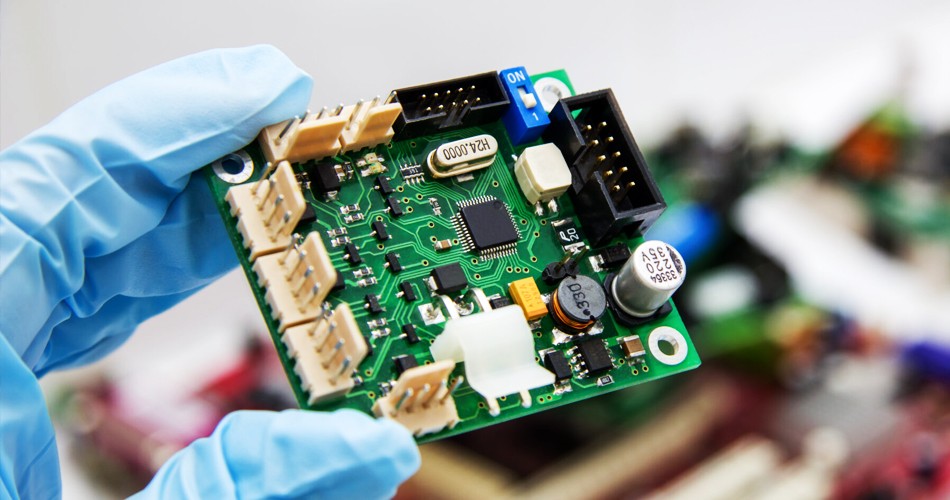- English
- Español
- Português
- русский
- Français
- 日本語
- Deutsch
- tiếng Việt
- Italiano
- Nederlands
- ภาษาไทย
- Polski
- 한국어
- Svenska
- magyar
- Malay
- বাংলা ভাষার
- Dansk
- Suomi
- हिन्दी
- Pilipino
- Türkçe
- Gaeilge
- العربية
- Indonesia
- Norsk
- تمل
- český
- ελληνικά
- український
- Javanese
- فارسی
- தமிழ்
- తెలుగు
- नेपाली
- Burmese
- български
- ລາວ
- Latine
- Қазақша
- Euskal
- Azərbaycan
- Slovenský jazyk
- Македонски
- Lietuvos
- Eesti Keel
- Română
- Slovenski
- मराठी
- Srpski језик
Automated soldering and gold plating technology in PCBA assembly
In PCBA assembly, automated soldering and gold plating technology are two critical process steps that are crucial to ensuring the quality, reliability and performance of the circuit board. Here are the details about these two technologies:

1. Automated Soldering Technology:
Automated soldering is a technique used to connect electronic components to printed circuit boards and usually includes the following main methods:
Surface Mount Technology (SMT): SMT is a common automated soldering technology that involves pasting electronic components (such as chips, resistors, capacitors, etc.) onto printed circuit boards and then connecting them through high-temperature molten soldering materials. This method is fast and suitable for high-density PCBA.
Wave Soldering: Wave soldering is commonly used to join plug-in components such as electronic sockets and connectors. The printed circuit board is passed through a solder surge through molten solder, thereby connecting the components.
Reflow Soldering: Reflow soldering is used to connect electronic components during the SMT process of PCBA. The components on the printed circuit board are covered with solder paste, and then they are fed via a conveyor belt into a reflow oven to melt the solder paste at high temperatures and connect the components.
Advantages of automated soldering include:
Efficient production: It can greatly improve PCBA production efficiency because the soldering process is fast and consistent.
Reduced human error: Automated welding reduces the risk of human error and improves product quality.
Suitable for high-density designs: SMT is particularly suitable for high-density circuit board designs because it enables compact connections between small components.
2. Gold Plating Technology:
Gold plating is a technique for covering metal on printed circuit boards, often used to connect plug-in components and ensure reliable electrical connections. Here are some common gold plating techniques:
Electroless Nickel/Immersion Gold (ENIG): ENIG is a common surface gold plating technique that involves depositing metal (usually nickel and gold) onto the pads of a printed circuit board. It provides a flat, corrosion-resistant surface suitable for SMT and plug-in components.
Hot Air Solder Levelling(HASL): HASL is a technique that covers the pads by dipping the circuit board into molten solder. It is an affordable option that is suitable for general applications, but may not be suitable for high-density PCBA boards.
Hard Gold and Soft Gold: Hard gold and soft gold are two common metal materials used in different applications. Hard gold is stronger and suitable for plug-ins that are frequently connected and disconnected, while soft gold offers higher conductivity.
Advantages of Gold Plating include:
PROVIDES RELIABLE ELECTRICAL CONNECTION: The gold-plated surface provides an excellent electrical connection, reducing the risk of poor connections and failures.
Corrosion Resistance: Metal plating has high corrosion resistance and helps extend the life of PCBA.
Adaptability: Different gold plating technologies are suitable for different applications and can be selected according to needs.
In summary, automated soldering technology and gold plating technology play a vital role in PCBA assembly. They help ensure high-quality, reliable circuit board assembly and meet the needs of different applications. Design teams and manufacturers should select appropriate technologies and processes based on the specific requirements of the project.
Send Inquiry
-
Delivery Service






-
Payment Options









